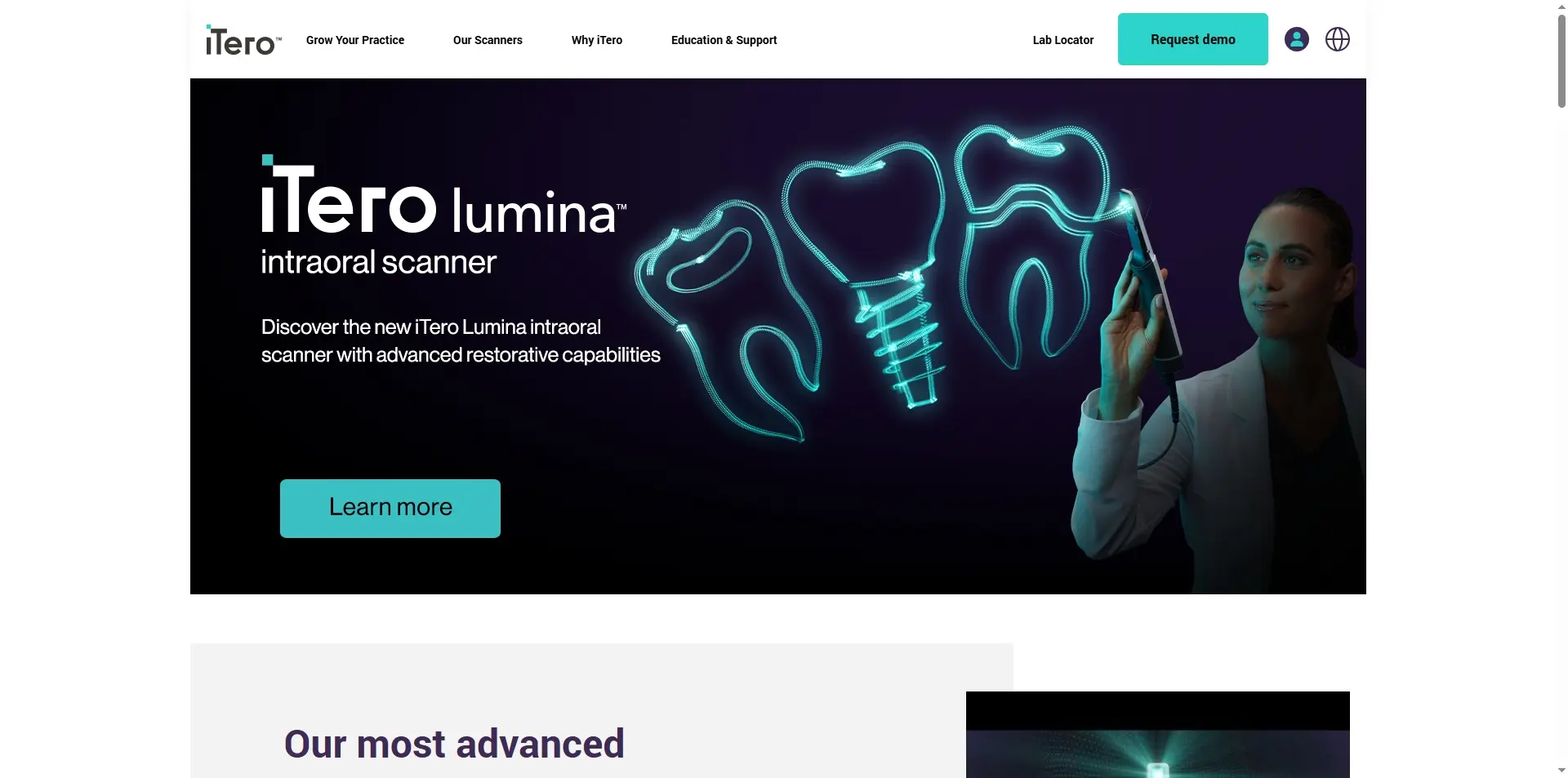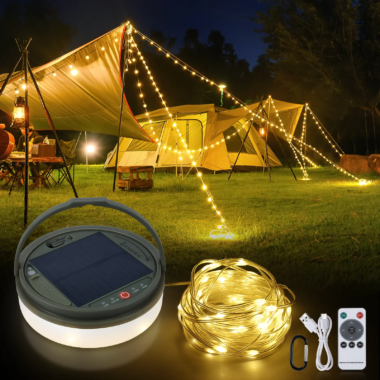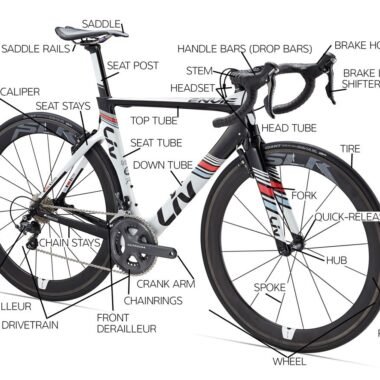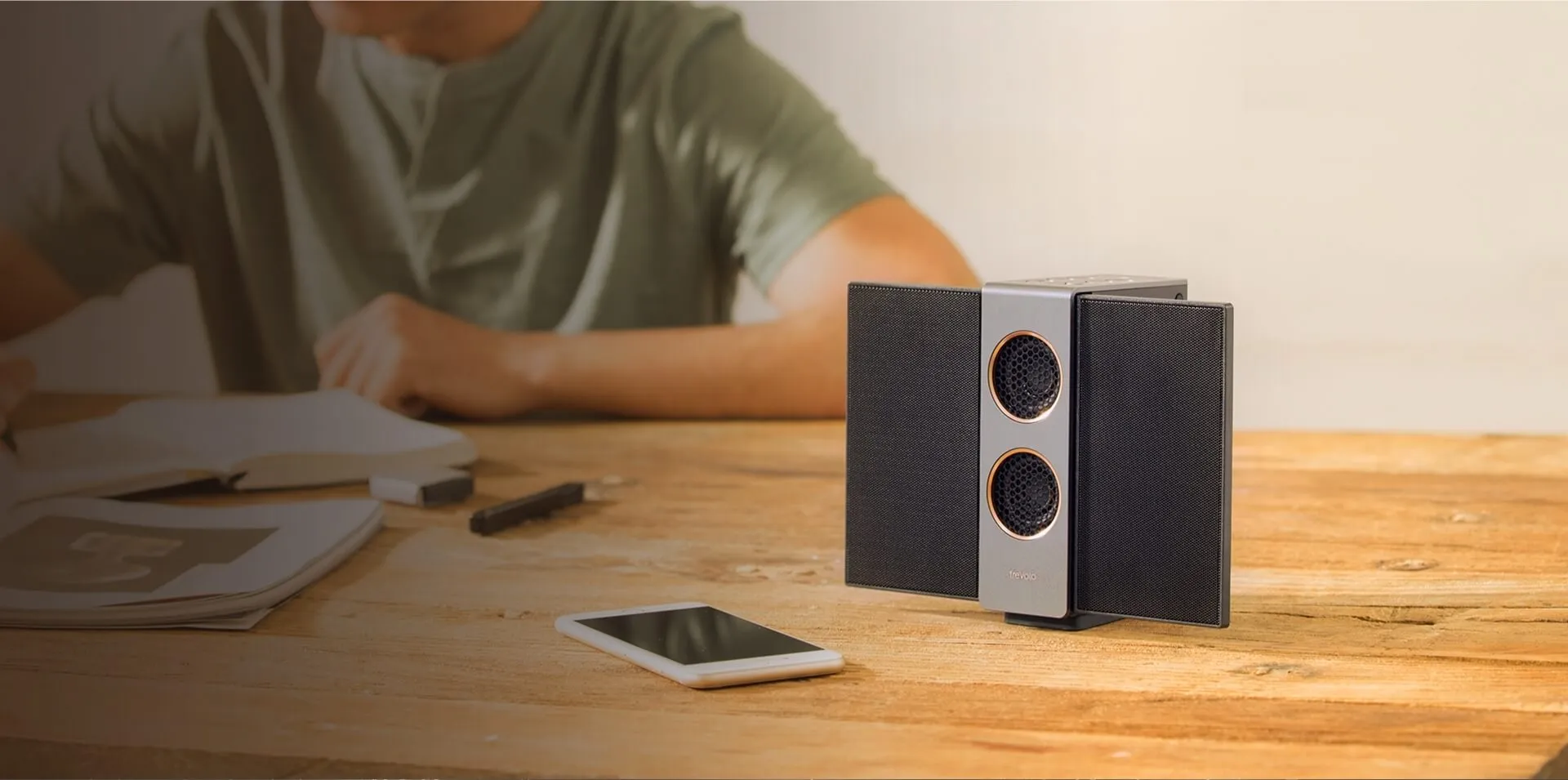In the rapidly evolving landscape of modern dentistry, intraoral scanners have transcended mere tools to become the backbone of digital innovation, reshaping how dental professionals approach everything from routine check-ups to complex full-arch restorations. Unlike traditional impression materials—messy, time-consuming, and often uncomfortable for patients—these devices capture 3D images with micron-level precision, slashing chairtime, reducing errors, and elevating patient satisfaction. According to recent industry reports, practices adopting intraoral scanners have seen a 30% increase in case acceptance, thanks to clearer patient communication via visual 3D models.
As digital dentistry becomes non-negotiable for staying competitive, understanding the nuances of leading intraoral scanner brands is key. This guide dives into the top 10 Intraoral Scanner Tips brands defining 2025, unpacking their unique technologies, clinical applications, and how they align with modern practice needs. Whether you’re upgrading from analog methods or seeking to optimize an existing digital workflow, these insights—paired with strategic use of Intraoral Scanner Tips for SEO—will help your practice stand out, attract tech-savvy patients, and deliver exceptional care.
1. 3Shape TRIOS 6 Wireless
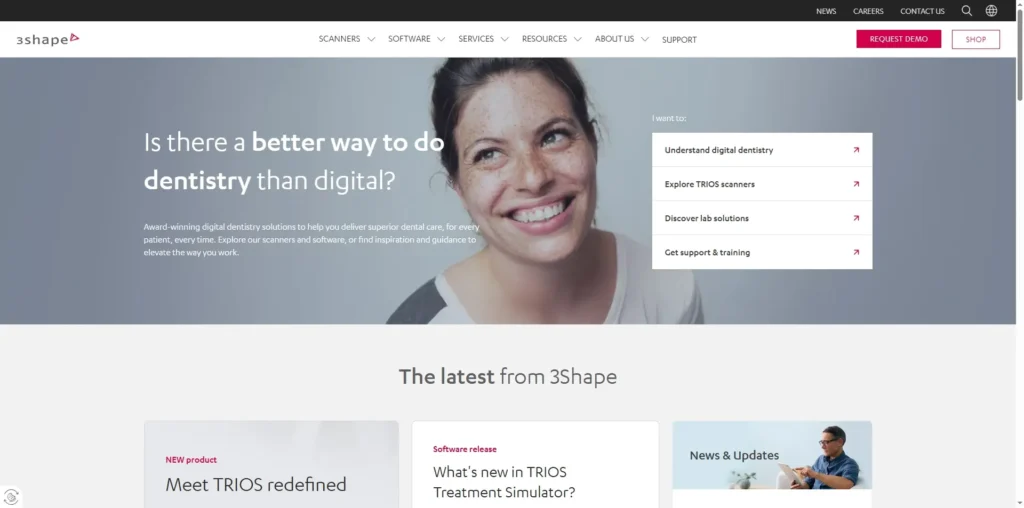
The 3Shape TRIOS 6 Wireless isn’t just an upgrade—it’s a reinvention of intraoral scanning, designed to bridge precision and practicality. Building on 3Shape’s legacy, this Intraoral Scanner Tips boasts a staggering 110% higher resolution than its predecessor, translating to 20-micron detail capture—critical for intricate cases like veneer margins or implant abutment design. Its AI-assisted diagnostics, powered by TRIOS DX Plus, goes beyond basic scanning: it analyzes scans in real time to highlight early caries, cracks, and even periodontal pocket depths, turning raw data into actionable insights.
A standout feature is its hyperspectral technology, which simultaneously captures red, green, and blue light sources. This isn’t just about aesthetics; it creates photorealistic 3D models that mimic natural tooth translucency, making shade matching for restorations nearly foolproof. Wireless freedom, via a long-lasting 6-hour battery, lets clinicians move between operatories without cable constraints, while the intuitive 10-inch touchscreen interface simplifies navigation—even for team members new to digital tools.
Compatibility is another strength: TRIOS 6 integrates seamlessly with 3Shape’s Unite Cloud, allowing secure access to scans from any device, and works with over 100 dental software platforms, from lab management tools to patient education apps. Practices report a 40% reduction in retakes, thanks to its real-time scan validation, making it a top choice for busy clinics prioritizing both precision and productivity.
2. Align Technology iTero Lumina
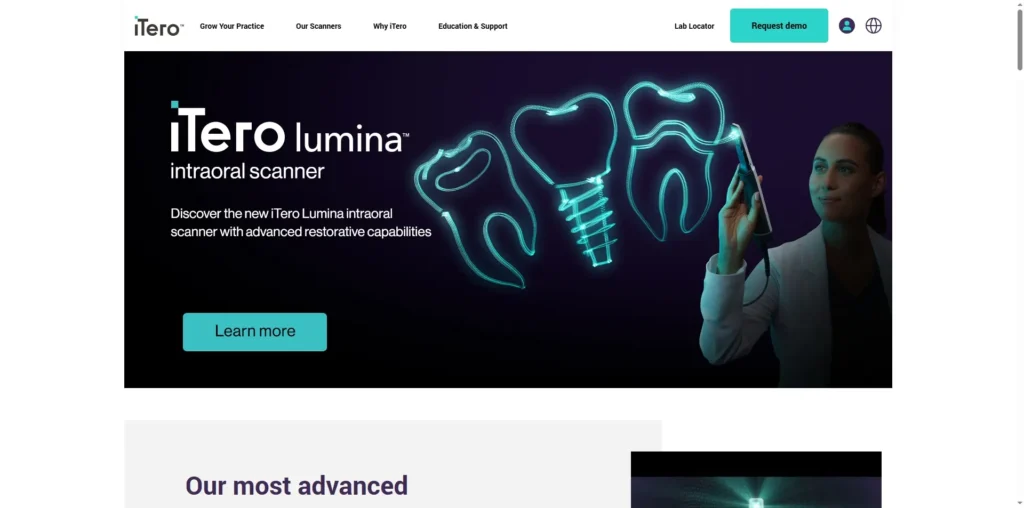
Align Technology’s iTero Lumina redefines versatility, excelling in both orthodontics and restorative dentistry with features that cater to the unique demands of each field. At its core is Near-Infrared Imaging (NIRI) technology, which penetrates enamel to detect interproximal caries up to 5mm below the surface—often missed by traditional visual exams. For restorative work, NIRI also aids in shade matching by analyzing the tooth’s underlying structure, ensuring crowns and veneers blend seamlessly with natural dentition.
The Multi-Direct Capture™ feature is a game-changer for efficiency: it captures a full arch in a single, fluid pass, cutting scan time from 10–15 minutes to just 3–4 minutes. This not only reduces patient discomfort but also frees up chairtime for more appointments. AI-driven workflows automate tedious tasks: margin detection, for example, identifies restoration edges with 98% accuracy, while occlusion analysis maps bite relationships in seconds—tasks that once took clinicians 20+ minutes manually.
Orthodontists benefit from its photogrammetry-grade accuracy (20 microns), ensuring Invisalign treatment plans are based on precise tooth positions. Integration with the Invisalign ecosystem is seamless: scans sync instantly to the Invisalign Outcome Simulator, letting patients visualize results before treatment begins—a tool that boosts case acceptance by 50%, according to user data. For practices balancing ortho and restorative work, the iTero Lumina is a unified solution that delivers on speed, accuracy, and patient engagement.
3. Dentsply Sirona PrimeScan 2
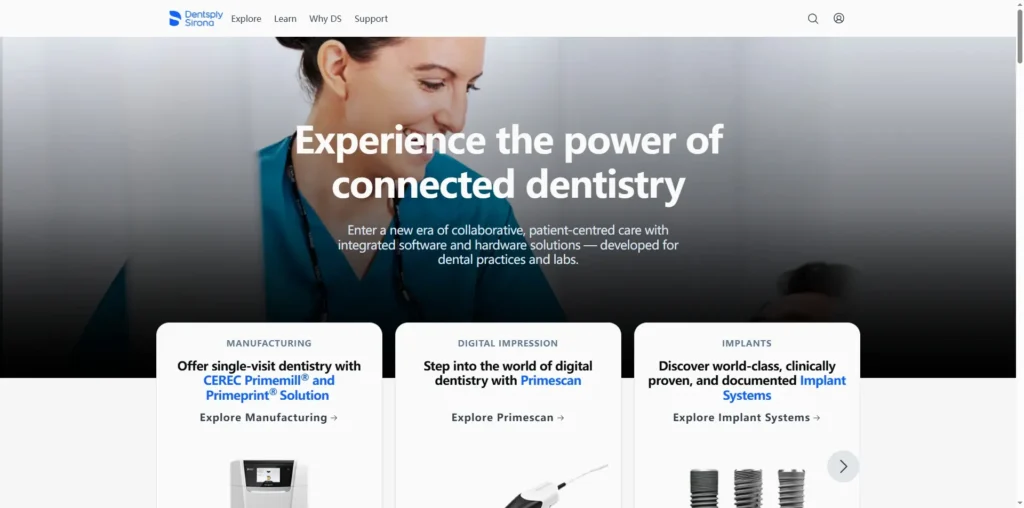
Dentsply Sirona’s PrimeScan 2 is engineered for high-volume practices where speed and reliability are non-negotiable. Building on the success of its predecessor, it scans 2x faster, capturing a full arch in under 25 seconds—ideal for clinics seeing 20+ patients daily. This speed doesn’t sacrifice precision: its 16-megapixel sensor captures details down to 15 microns, ensuring even the finest occlusal grooves or implant threads are rendered clearly.
AI-powered scan clean-up is a standout feature. The algorithm automatically identifies and removes artifacts like saliva bubbles, tongue shadows, or debris, reducing post-scan editing time by 60%. Clinicians praise its ergonomic wand, designed with a balanced weight distribution (320g) and rubberized grip that minimizes hand fatigue during back-to-back scans—a critical detail for practices with long hours.
Open architecture is another highlight: PrimeScan 2 plays well with third-party CAD/CAM systems, from 3Shape’s Dental System to Exocad, giving labs and clinics flexibility in their workflows. The PrimeScan Connect add-on enables wireless data transfer via encrypted cloud storage, letting technicians access scans within minutes of capture—eliminating delays from physical shipments. For practices scaling their digital offerings, this Intraoral Scanner Tips delivers the speed and adaptability needed to keep up with demand.
4. Medit i900
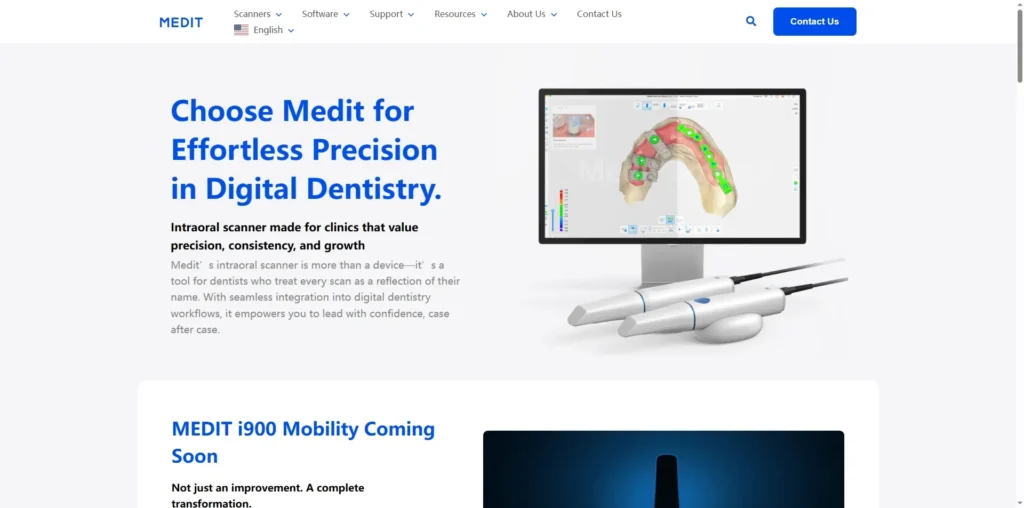
The Medit i900 is built for the most demanding clinical environments, where consistency matters as much as precision. Its 4K ultra HD resolution (3840×2160 pixels) captures details so sharp that even microfractures in enamel are visible—making it a favorite for cosmetic dentists and prosthodontists. What sets it apart is its AI-powered noise reduction, which uses machine learning to filter out interference from wet surfaces, blood, or dark restorative materials—common pain points in scanning.
Ergonomics are a priority: the lightweight wand (280g) features a contoured design that fits comfortably in both left and right hands, while the 8-inch touchscreen displays scans in real time, allowing clinicians to adjust angles instantly if an area is missed. Wireless connectivity, via dual-band Wi-Fi, enables real-time sharing with labs, so technicians can start designing restorations while the patient is still in the chair—cutting turnaround time by 2–3 days.
Infection control is seamless: the autoclavable scan tips are made from medical-grade silicone, withstand 134°C steam sterilization, and can be reused up to 100 times, reducing waste and costs. For implant cases, its multi-bite scanning feature captures centric, protrusive, and lateral occlusion positions, then overlays them to create a dynamic 3D model of bite movement—essential for designing stable, functional prosthetics. Practices report a 35% reduction in lab remakes, thanks to its consistent accuracy.
5. Dexis IS 3800W
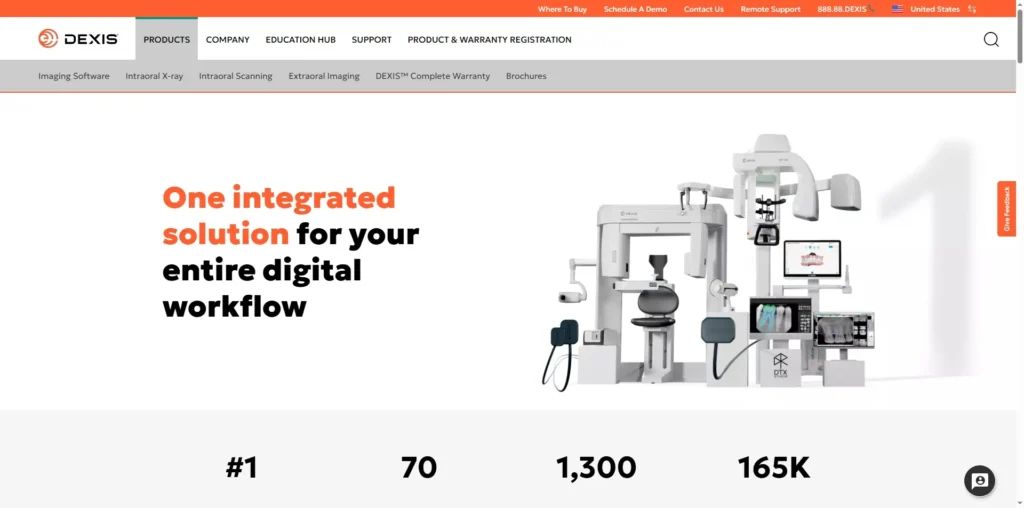
The Dexis IS 3800W proves that power and portability can coexist, making it ideal for practices transitioning to digital dentistry or those with limited space. Weighing just 245g—lighter than most smartphones—its pen-style design reduces hand strain during extended use, a boon for clinicians with arthritis or repetitive strain injuries. Despite its size, it packs a punch: the rechargeable battery lasts up to 1 hour of continuous scanning, enough for 15–20 patients per charge, with a quick 30-minute quick charge to get back to work.
AI-assisted edge detection is a standout tool: it automatically identifies restoration margins, tooth contours, and gingival boundaries, even in crowded mouths, reducing the need for manual adjustments. The integrated HD intraoral camera (1080p) captures high-res photos of soft tissues or lesions, which can be overlaid onto 3D scans for comprehensive documentation—useful for tracking gum health or pre/post-treatment comparisons.
Its open system philosophy means it plays well with others: STL file exports work with any lab software, from Zirkonzahn to Nobel Biocare, while integration with Dexis’s practice management software lets scans be stored directly in patient charts. With a 2-year warranty (double the industry average) and zero licensing fees, it’s a cost-effective choice: practices recoup their investment in 6–8 months, thanks to reduced material costs and faster workflows. For budget-conscious clinics, the IS 3800W delivers professional-grade results without the premium price tag.
6. Carestream CS 3700
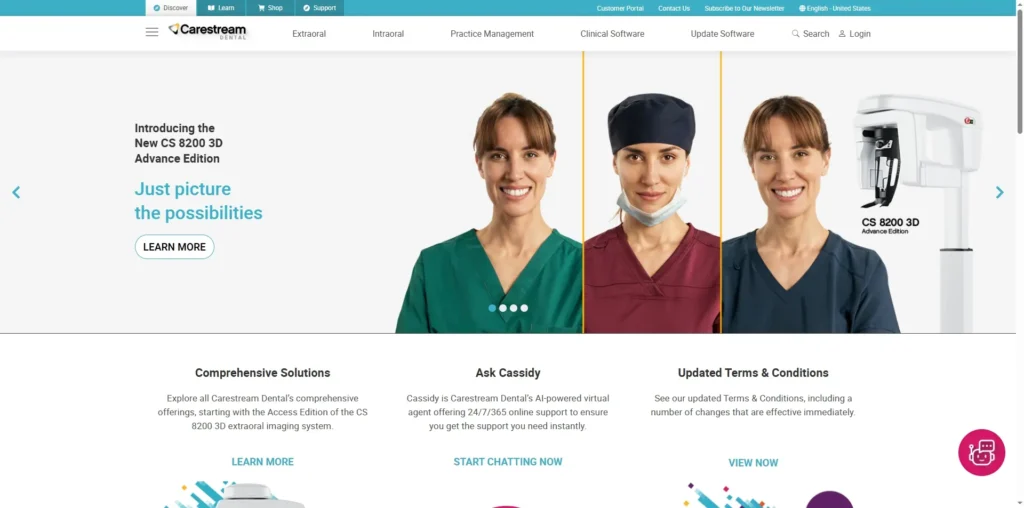
The Carestream CS 3700 is a workhorse designed to handle the full range of dental procedures, from routine fillings to full-arch implants, with reliability that earns it a spot in many general practices. Its Smart-Shade technology is a favorite among restorative dentists: it uses a built-in spectrophotometer to measure tooth color across 16 million shades, then compares it to a database of dental materials (porcelain, composite, zirconia) to recommend the closest match—eliminating the guesswork in shade selection.
Speed is another strength: it captures a full arch in 45 seconds, with a “quick scan” mode for single-tooth restorations that takes just 10 seconds. The ergonomic wand, paired with an optional adjustable wrist strap, reduces arm fatigue during long sessions, while the lightweight design (310g) makes it easy to maneuver in tight spaces, like pediatric patients’ mouths.
Infection control is straightforward: the autoclavable scan tips are color-coded for easy size identification (small, medium, large) and fit securely to prevent slipping during use. Its open architecture supports STL, OBJ, and PLY file formats, ensuring compatibility with labs using any CAD/CAM system. Practices appreciate its plug-and-play setup—no complex training required—and its durability: the wand is drop-tested to 1.5 meters, a must in busy clinics. For practices seeking a “set it and forget it” scanner that delivers consistent results across all procedures, the CS 3700 fits the bill.
7. Air Techniques CamX Elara
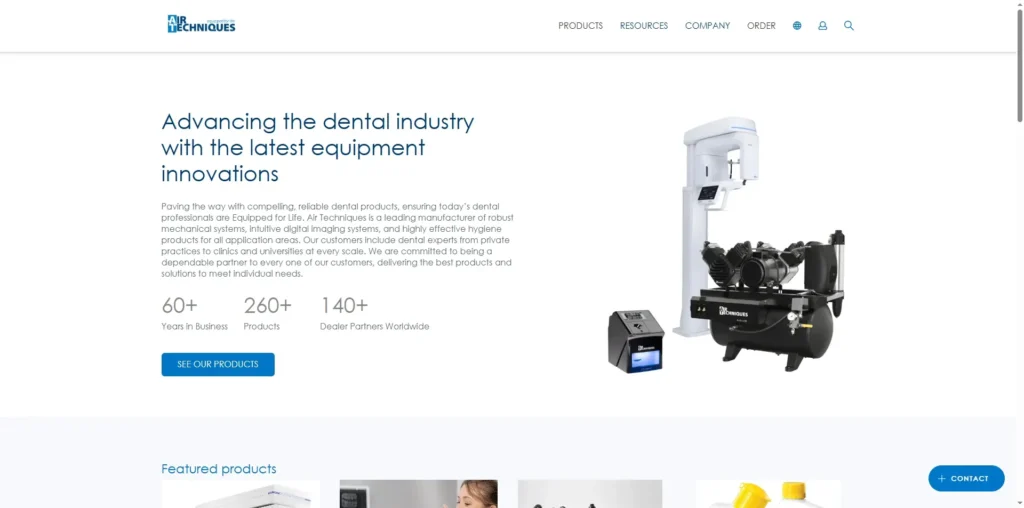
The CamX Elara by Air Techniques is a compact powerhouse that proves you don’t need a bulky device to achieve high-quality imaging—making it perfect for small practices or mobile dental units. Its 12-megapixel sensor captures images with 5-micron detail, sharp enough to identify early enamel demineralization or microcracks that might be missed by the naked eye. Unlike traditional scanners, it functions as both an intraoral camera and a 3D scanner, reducing the need for multiple devices and saving counter space.
Wireless connectivity is a standout feature: it syncs via Bluetooth to practice management software, automatically attaching scans and photos to patient records. The intuitive touchscreen interface, with large, labeled icons, is easy for staff to learn—critical for practices with high turnover. Its sleek, modern design (available in white or silver) blends into any operatory decor, while the lightweight build (290g) makes it easy to pass between team members.
For patient education, the CamX Elara shines: its 3D models can be rotated and zoomed in real time, helping patients visualize issues like impacted wisdom teeth or misaligned bites. The autoclavable tips, made from heat-resistant plastic, are affordable to replace and compatible with standard sterilization protocols. Priced lower than many competitors, it’s an accessible entry point into digital dentistry for practices on a budget, without sacrificing the quality needed for accurate diagnostics and treatment planning.
8. Shining 3D Aoralscan 3 Wireless
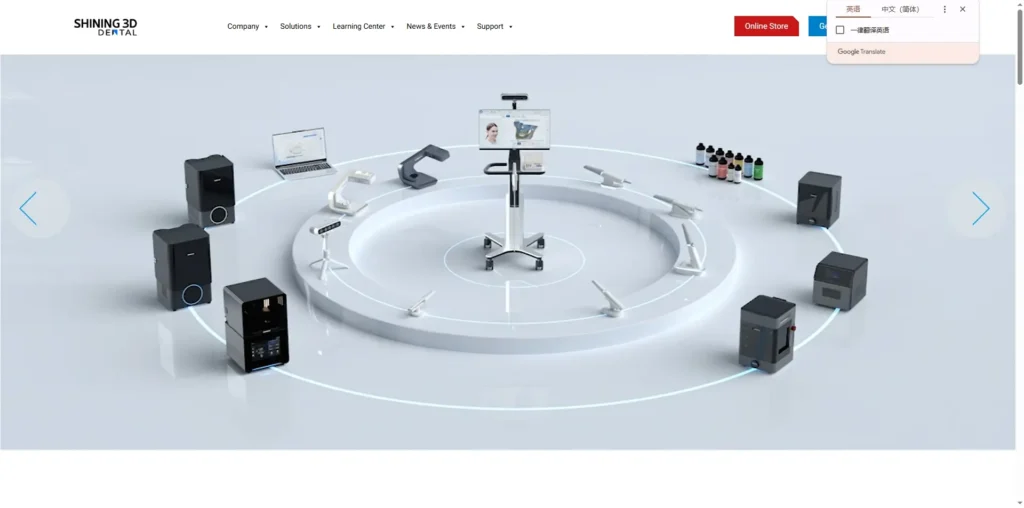
The Aoralscan 3 Wireless by Shining 3D is engineered for complex cases, where precision and speed are equally critical—making it a top choice for implantologists and oral surgeons. Its structured light technology uses 405nm blue light to capture 3D data, which is less glaring for patients than traditional white light scanners, reducing discomfort during long scans. This technology, paired with a high-speed sensor, captures a full arch in under 30 seconds, with 20-micron accuracy—essential for planning full-arch implant restorations.
AI-powered motion tracking is a game-changer: it compensates for patient movement (like swallowing or tongue shifts) by predicting and correcting scan gaps, reducing retakes by 50% compared to static scanners. The wireless design, with a 4-hour battery life, allows clinicians to move freely around the chair, adjusting angles to capture hard-to-reach areas like the distal of molars.
Compatibility is robust: it integrates with major CAD/CAM systems, including Shining 3D’s own Dental System and third-party tools like 3Shape, enabling seamless workflow from scan to design. The autoclavable tips are designed with a tapered end, making them ideal for scanning deep into the posterior region, while the anti-fog coating ensures clear imaging even in humid mouths. For practices specializing in complex restorative work, the Aoralscan 3 delivers the speed, accuracy, and flexibility needed to handle the most challenging cases.
9. Planmeca Emerald S
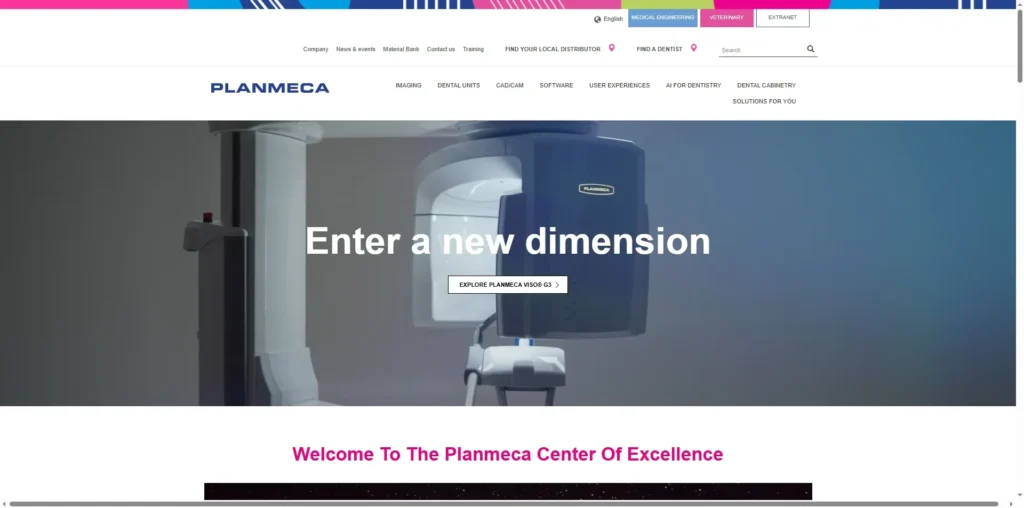
The Planmeca Emerald S is a testament to Scandinavian design—marrying functionality with user-centric features that prioritize both clinician and patient comfort. Its lightweight wand (229g) is one of the lightest on the market, with a balanced grip that reduces hand strain during extended use. The ergonomic design includes a thumb rest and textured surface, ensuring a secure hold even with gloves, making it popular among clinicians who perform 10+ scans daily.
A unique feature is the Cariosity™ tip, which uses transillumination (LED light at 450nm) to detect early caries. By highlighting areas of demineralization as dark spots on the scan, it helps catch decay before it’s visible on radiographs—enabling minimally invasive treatment. For restorative work, its shade assist technology uses a built-in color sensor to match teeth to VITA Classical and 3D-Master shades, with a 90% accuracy rate in clinical trials.
Anti-fogging technology is a practical touch: the scan tip heats to 37°C, preventing condensation in cold environments or when scanning patients with dry mouths. Its open system supports STL exports, making it compatible with labs using any software, while integration with Planmeca’s Romexis software allows for seamless merging of scans with radiographs or CBCT images. For practices that value both diagnostic depth and operator comfort, the Emerald S strikes the perfect balance.
10. Straumann Virtuo Vivo
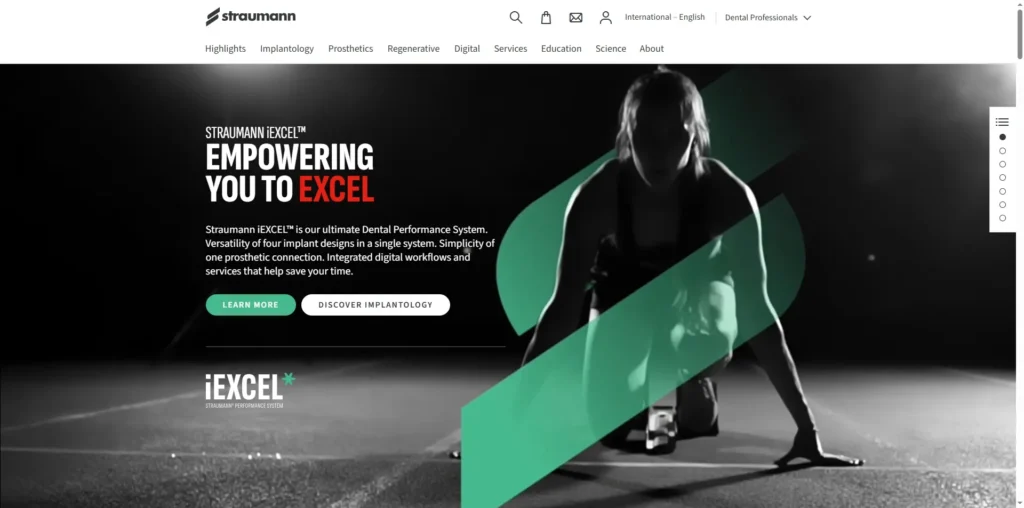
The Virtuo Vivo by Straumann is tailored for implant dentistry, where precision directly impacts patient outcomes. Its ultra-light wand (130g) is designed to navigate tight spaces, like edentulous arches or crowded dentitions, with ease—critical for capturing accurate implant positions. Unlike many scanners, it uses powder-free scanning: instead, it relies on advanced light projection to capture surfaces, eliminating the mess and patient discomfort associated with powder application.
AI-driven guided workflow simplifies complex scans: the software prompts clinicians to capture specific areas (e.g., “Scan distal of #30”) and highlights gaps in real time, reducing the learning curve for new users. High-resolution color imaging (24-bit) captures gingival tone and tooth translucency, aiding in the design of natural-looking prosthetics that blend with soft tissues.
Integration with Straumann’s digital ecosystem is seamless: scans sync directly to Straumann CARES® Software, where they can be used to plan implant placement, design custom abutments, and order restorations—all in one platform. Autoclavable sleeves, made from medical-grade silicone, fit snugly over the wand and are easy to replace between patients, ensuring infection control. For practices focused on implant dentistry, the Virtuo Vivo delivers the precision and workflow efficiency needed to streamline cases from planning to delivery.
Conclusion
The shift to digital dentistry is no longer a trend—it’s a necessity, and intraoral scanners are at the forefront of this transformation. The brands highlighted here—from 3Shape’s precision to Straumann’s implant-focused design—cater to diverse practice needs, whether you prioritize speed, patient comfort, or specialized workflows like orthodontics or implantology.
By leveraging these technologies and integrating Intraoral Scanner Tips into your online strategy, you can not only enhance clinical outcomes but also attract patients seeking modern, efficient care. When choosing a scanner, consider your practice’s focus (general, ortho, implants), patient volume, and integration needs—then let the features align with your goals.
As digital dentistry continues to evolve, these scanners will only become more advanced, with AI, wireless connectivity, and patient-centric design driving innovation. Embracing these tools today isn’t just about staying competitive—it’s about delivering the highest standard of care, one precise scan at a time.

